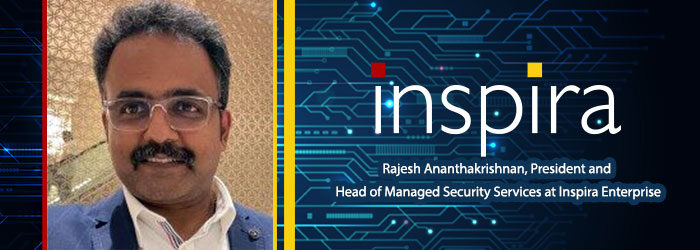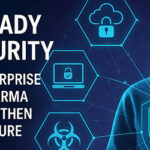Digital transformation, cloud adoption, and remote work are contributing to the rapid expansion of organizations’ digital footprints, which in turn increases their attack surface and makes them vulnerable to threats. These attack surfaces become larger, more distributed, and more dynamic, where traditional cybersecurity tools fail to address them.
Growing security challenges faced by industries
Organizations across industry verticals find it rather difficult to maintain a robust security posture in today’s evolving cybersecurity landscape, with several increasing challenges. Shadow IT, where the IT department has no clue of any application or service being adopted by business units to perform their tasks. Limited visibility into such a shadow IT application can create a security gap. This can happen in the case of misconfigurations, too, contributing to hidden vulnerabilities. Additionally, the cloud technology, remote work, and frequent service rollouts are rapidly changing IT infrastructure and expanding the attack surface. Organizations also face increasing risks from third parties, largely due to a lack of visibility into their security practices and risk management frameworks. Many a time lack of clarity on the prioritization of vulnerabilities and even identifying them in the first place can delay an appropriate and timely response. Several organizations continue to leverage a reactive approach in combating cyber threats rather than adopting proactive threat management strategies.
Importance of the CTEM approach
Traditional cybersecurity tools and frameworks are inadequate to detect and combat advanced cyber threats, leading to unauthorized access to systems and data, causing data breaches and exploitation of unused user accounts, weak passwords, and supply chain vulnerabilities to infiltrate the system. Such a situation invites more threat actors to act at speed, leaving organizations struggling to address the damage occurred with security patches that are insufficient to minimize future threat exposure. This calls for a proactive security strategy rather than a reactive one to remain secure, such as the Continuous Threat Exposure Management (CTEM) program coined by Gartner. CTEM offers a structural approach to ongoing security monitoring, which helps to identify, assess, prioritize, and mitigate threats before they cause harm to the systems and exfiltrate data. CTEM approach reduces risk exposure by automating continuous monitoring of the growing attack surface and closing the security gaps. It enables continuous scanning of digital assets, aiding security teams to detect vulnerabilities so that proactive action can be taken.
Five Steps of the CTEM Program:
Scoping:
The first phase of CTEM covers scoping the exposure where the risk posture of the attack surface and the risks associated with SaaS and software supply chain are assessed based on the key performance indicators (KPIs) and business goals, ensuring a clear plan of action for the security team. Here, both internal and external assets, such as databases, applications, cloud infrastructure, and endpoints, are assessed, attack vectors are defined, and security objectives are established.
Discovery:
After the scope is established, security teams have to perform in-house discovery by identifying both visible and hidden assets, vulnerabilities, shadow IT assets, misconfiguration, potential attack vectors, and other risks. This helps in mapping asset inventory by highlighting gaps in security control and attack-surface gaps, with a focus on the potential action taken by the attacker to exploit identity-based weaknesses and misconfigurations, leveraging advanced tools. This step enables organizations to get a clear understanding of attack vectors and take prior actions before exploitation.
Prioritization:
Once the vulnerabilities and potential security issues are discovered, they have to be ranked based on urgency, security, potential impact, likelihood of exploitation, and the level of risk posed to the organization. By doing so, high-value assets are identified, and the remediation efforts can be directed to these crucial areas where the impact of threats will be high and security breaches can be prevented at the right time. This also helps in filtering out low-impact threats that do not pose a significant threat to the organization.
Validation:
In this stage, security teams validate the effectiveness of the security control by leveraging automated penetration testing tools and attack simulation. Automated validation techniques such as break and attack simulation (BAS) can be leveraged too to test the response plan. They can also replicate the tactics, techniques, and procedures of threat actors to test an organization’s security controls. This will provide a clear indication of how attackers could exploit a vulnerability and ensure the response plan is fast enough with all security controls in place to stop an attack and safeguard the business.
Mobilization:
This final phase of the CTEM framework enables taking corrective measures to remediate security risks, threats, and vulnerabilities by security teams that join forces with developers and product owners and make sure all stakeholders have a clear understanding of the entire process. Teams across business units update systems and applications, deploy patches, and implement all necessary security measures to fix vulnerabilities. All employees are educated on cybersecurity awareness, how to secure their digital assets and what security best practices to follow. It is also crucial to ensure continuous monitoring is observed to ensure the network and Infrastructure remain resilient to potential threats.
CTEM has become indispensable for cybersecurity in today’s digital era, as it provides a complete inventory of the organization’s digital assets and data that have to be safeguarded. Security teams are able to identify key assets from a threat actor’s perspective and get an understanding of the nature of the potential attacks, compelling organizations to proactively close all security gaps. CTEM also incorporates risk-based scoring to assess and prioritize vulnerabilities based on real-world scenarios and track historical changes in the attack surface.
Organizations that adopt CTEM are better positioned to continuously reduce their attack surface while aligning cybersecurity efforts with business objectives, transforming security into a strategic advantage.
According to Gartner, by 2026, organizations that prioritize their security investments based on a CTEM program will be 3x less likely to suffer a breach.
The Role of Continuous Threat Exposure Management (CTEM) in Strengthening Cybersecurity Posture
By: Rajesh Ananthakrishnan, President and Head of Managed Security Services at Inspira Enterprise





